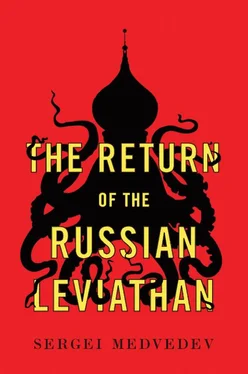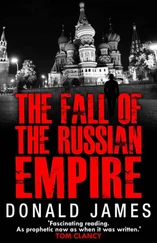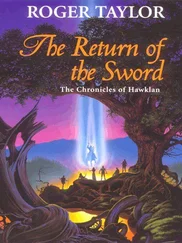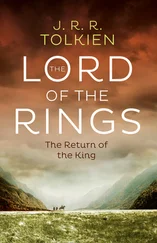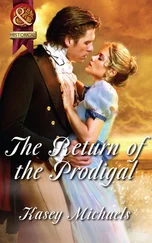But here’s the paradox: my 9 May hasn’t gone away; it’s always with me. Behind the noise of the holiday, everything becomes clearer: that the Victory is greater than Stalin, Putin, the Kremlin, the Soviet Union; that this huge existential act of suffering and triumph cannot be privatized, neither by the state, nor by its lying propagandists. It belongs to the people, not the state; it’s no wonder that Stalin was so scared of it. We should return the Victory to ourselves as a people’s holiday, a secular Easter – a day of spring and freedom, of pride and dignity, a day to remember the victims and despise those who sent them to the slaughter. This is our day, which nobody has the right to take from us, nor spoil, because it takes place not on Red Square but in the hearts of the people.
WALTZ OF THE URALS CHEKISTS
The corporate New Year party was in full swing. The ‘Soviet champagne’ corks were popping, on the tables there were bottles of Georgian ‘Saperavi’ wine and vintage Armenian brandy, dishes of roast suckling pig and stuffed pike, red caviar in crystal bowls, bunches of grapes hung in baroque fashion over the sides of fruit bowls. From the gramophone came the voice of the legendary 1930s singer Pyotr Leshchenko, and couples swung round the floor in the pre-war dance, the Rio-Rita foxtrot. The Kronos-M creative agency was holding a retro ‘New Year 1937’ themed party in the club on Tverskaya Street in the centre of Moscow. On the invitation, printed on rough cardboard, there were portraits of Stalin and the Chairman of the Soviet government Mikhail Kalinin, a steam engine with a red star, the Spassky Tower in the Kremlin, and four skaters, each with one of four numbers emblazoned on their chest: 1, 9, 3 and 7.
The dress code matched the occasion: the women, with permed curly hair, were in tight-waisted dresses with puffed sleeves; the men had short haircuts, formal jackets and bell-bottom trousers with turn-ups, or they wore the stylized 1930s military uniform. The young account manager, Gennady, looked particularly dashing as an NKVD major: in navy blue jodhpurs with a maroon stripe, his soldier’s shirt with its collar-tabs, and cap with navy blue cap-band, pulled down tightly on his shaven head. With his squeaky Sam Browne belt and his new box calf boots, Gena was the centre of attention. He proposed jokey toasts to ‘vigilance’ and sang in karaoke the popular song ‘The Waltz of the Urals Chekists’ ; when he popped out for a smoke, he opened his cigarette case and offered everyone genuine ‘Belomorkanal’ papirosi , in a packet the design of which hadn’t changed since the 1930s.
Throwing a rough army greatcoat over his shoulders, he stood in the porch of the club watching the flow of New Year’s Eve revellers going along Tverskaya, lit up by the flashes of the lights from advertisements and traffic lights. Gena’s head was spinning from the mix of brandy and champagne he had been drinking and from the unfamiliarly strong papirosi , and he wandered out onto the pavement under the large snowflakes. The pedestrians were not at all surprised by the sight of a man in jodhpurs, and hurried on their New Year way. A couple of times, taxis stopped, the drivers threw questioning glances at him and then drove off. Unexpectedly, a retro-automobile, a GAZ M-1, pulled over from the flow of traffic, a famous pre-war ‘M-car’, with grilles on the sides of the long bonnet. With a cursory gesture, the driver called him over and Gena, driven by curiosity, wandered over to the curb and sat in the back seat.
‘Where to?’ asked the driver.
‘To see Father Christmas’, Gena joked, ‘in the High North.’
‘As you wish,’ replied the driver, and with a crunch put the car in gear.
Inside the car there was the sickly smell of cheap petrol, like in the country buses of Gena’s childhood, and the young man became carsick. The driver remained silent as the car slowly made its way through the New Year’s Eve traffic on Tverskaya, heading down towards Manezh Square, past the Moscow City Council building and the Central Telegraph. Gena closed his eyes and forgot where he was, but opened them when he heard the clanking of gates. The ‘M-car’ drove through the gates of the huge dark NKVD building on Lubyanka Square. ‘What’s going on?’ he muttered in his half-awake state, but strong hands had already pulled open the door from outside, dragged him out of the car and pushed him into the entrance of the internal courtyard. In front of him, as if in a dream, there flashed past doors, bars, corridors, and featureless grey faces with fish-like eyes. A lieutenant of state security sitting in an office under portraits of Stalin and Dzerzhinsky indifferently wrote down his garbled explanation. On the tear-off calendar, Gena noticed the date: 29 December 1936. They started to search him. When they found his wallet and his documents, the lieutenant let out a whistle and called the captain. For a long time, the two of them examined his Russian passport with the two-headed eagle and the credit cards, the five-thousand-rouble banknote (‘Tsarist money’, said the captain knowingly), and, coming across the three one-hundred-dollar bills, muttered satisfyingly: ‘A spy!’ Next followed the degrading process of a strip search, the examination of the foreign labels on his shirt and underwear, and the first – not yet hard – punch in the face, which made Gena feel as if a salty wave had washed over him.
After thirty-five hours of endless interrogation, beaten, with a broken ring finger from having it shut in the door, sobbing, he signed a confession that he was an agent of a White emigrants’ organization who had been sent into the USSR for the purpose of espionage and to carry out counterrevolutionary terrorist activity. He was sentenced under Article 58, Section 6, to ten years in a labour camp. And in the middle of January 1937, under a hard frost, he travelled in a cold, barred ‘Stolypin’ railway car [11] Reforms introduced by Petr Stolypin (prime minister, 1906–11) led to a massive deportation of peasants and prisoners to Siberia. A special type of carriage was introduced for these settlers, consisting of two parts: a standard passenger compartment for a peasant and his family and a large zone for their livestock and agricultural tools. After the Revolution, the Cheka /NKVD found these carriages convenient for transporting convicts and exiles: the passenger part was used for prison guards, the cattle part for prisoners.
past Veliky Ustyug, the homeland of Father Christmas, through the Kotlass transit camp, and was handed over to the Ukhta-Pechora corrective labour camps in the Northern Urals.
When he arrived, he was put into a logging brigade. Unaccustomed as he was to physical labour, he was unable to fulfil his daily norm, for which he was regularly beaten by the brigade leader and other prisoners. His fashionable boots were taken from him by the criminals and in return he received ‘seasonal footwear’: foot-cloths and a scrap of a car tyre with a piece of wire to keep it attached to his foot. In the spring he went down with dystrophy and pellagra. He lay for a while in the hospital, and having survived through the summer with the help of vitamins from pine needles and wild onions, Gena returned to the barrack block. He turned into a classic camp ‘wick’ (as they were known, like in a candle), with an unshaven face, a mad look, with the padding falling out of his jacket – his appearance said, ‘just light me now’. The criminals reckoned he had gone mad, so they left him alone. He found it difficult himself to think who he was and who he had been in the past and he simply lived the life of the camp from day to day: from his morning ration of bread with hot water, until his evening skilly, watery soup with soya; his daily bread ration was cut back from eight hundred grams to six hundred, because he didn’t fulfil his norm.
Читать дальше
